One of the questions I get asked most often is, “What is the best paint for furniture?” Which still seems strange to me because I don’t really paint all that much furniture. At least, compared to my friends who flip furniture and paint furniture almost every day! But I do have a lot of experience with jewelry cabinets and jewelry boxes and when I don’t have the answer I have close friends to ask. So today, we’ll be going over the different types of furniture paint and when to use them.
This post contains affiliate links. You won’t pay any more when you use these but I will earn a small commission on any purchases you make after clicking on them and I greatly appreciate it. Thanks for helping support my little blog!!!
Types of Furniture Paint
Chalk-type Paint
Overview: Chalk-type paint is a thick paint with chalk and/or minerals that doesn’t require much prep and dries to a soft, matte finish. It’s my personal favorite for painting furniture because I’m basically a lazy painter. Plus, there’s no smell so I can paint furniture indoors. I’ve used many brands of chalk and mineral paints and they’re all very similar.
Pros: no sanding or priming needed, no smell, dries quickly
Cons: expensive, must have a topcoat
Best Uses: shabby chic, rustic, or vintage styles that don’t get heavy use
Popular brands of chalk-type paint:
- Annie Sloan
- Country Chic
- Heirloom Traditions
- Cece Caldwell
- Americana Decor Chalky Finish Paint
- Folk Art
- Rustoleum Chalked
- Dixie Belle
- Wise Owl
- General Finishes Chalk Style Paint
- FAT Paint
- Amy Howard at Home
- DIY Paint
- Maison Blanche
Examples of chalk and mineral painted projects:
- Light Blue Jewelry Cabinet
- Repurposed Vintage Chair Planter
- Octagon Table
- Vintage End Table Makeover
- Simple Black Jewelry Box Makeover
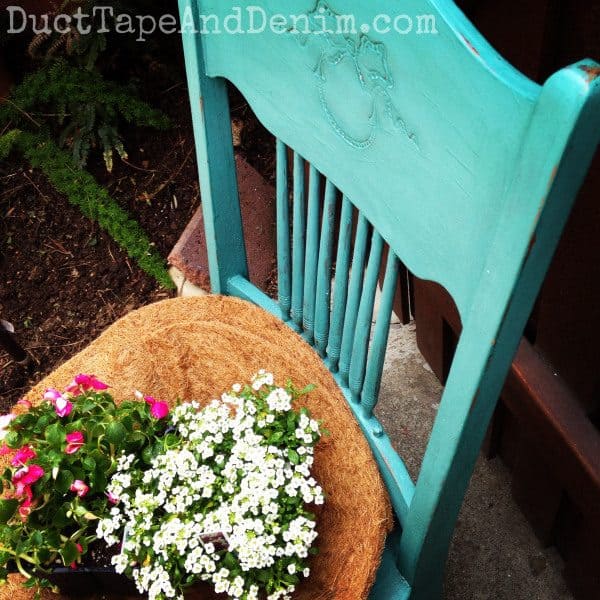
Painted with chalk type paint.
Milk Paint
Overview: Milk paint is an all-natural paint made with milk proteins and comes in powder form. It must be mixed with water before using it.
Pros: mix only what you need, dries fast, distresses well, no smell, good coverage, easy cleanup, vibrant colors
Cons: paint doesn’t last long after you mix it, hard to plan where chippy-ness will end up.
Best uses for milk furniture paint: shabby chic style, chippy look, color wash, use on antique furniture for an original look
Popular brands of milk paint:
Here’s a good look at how milk paint will chip:
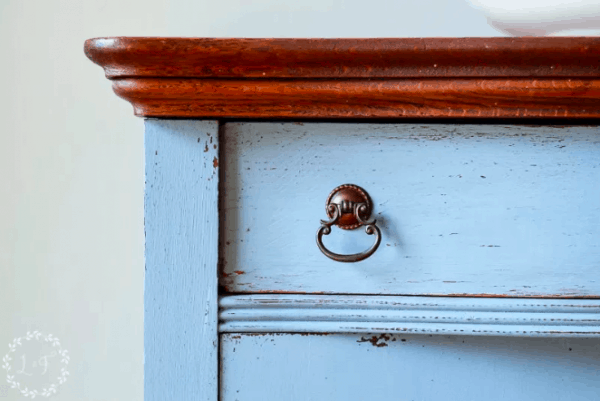
Painted with milk paint.
Here are some milk paint FAQ and projects:
- How to Mix Milk Paint
- How to Distress and Finish Sand Milk Paint
- How to Paint with Milk Paint and NOT Get Chips
- Dining Room Chairs Painted with Milk Paint
- Milk Painted Drawers
- Hall Tree in Milk Paint
- Small Table Painted with Milk Paint
Acrylic Paint
Overview: Acrylic paint dries to a hard finish and is good for cabinets or other furniture that will get heavy use.
Pros: doesn’t need a topcoat ( I would still recommend a top coat for table and dresser tops.), levels well, good coverage
Cons: doesn’t distress well
Best uses for acrylic paint: cabinets, tables, or other furniture that will get a lot of use
Popular brands of acrylic paints:
- Americana Decor Satin Enamel
- General Finishes Milk Paint (the name is a little deceptive… this is actually acrylic)
Examples of furniture painted with acrylic paint:
- General Finishes Milk Paint on Metal
- Blue Armoire with General Finishes Milk Paint
- Aqua Blue Dresser
- Navy Blue Man’s Jewelry Box
- White Armoire Painted with General Finishes Milk Paint
I also used Americana Decor Satin Enamel in my boho painted jewelry cabinet.
Latex Paint
Overview: Latex paint is the most common type of paint found at hardware stores and comes in a variety of sheens.
Pros: available everywhere, unlimited color choices, variety of sheens, easy to clean
Cons: some smell (more than chalk & mineral paints but not as much as oil-based), more prep needed if furniture already has paint or stain on it, primer is recommended
Best uses for latex paint: walls, unfinished wood
Popular brands of latex paint (specifically made for furniture):
- Rustoleum Painter’s Touch Paint
- Valspar Furniture Paint
You can also add in a chalk mix so that you can use latex paint like a chalk-type paint. In my experience, it never turns out as well unless you do the same prep as you would if you were just using latex. When I’ve used an additive in latex paint it seems much easier to scratch. But if you’d like to try, here’s my recipe for homemade chalk paint using a latex paint base.
Examples:
- End Table with Sherwin-Williams Latex Paint and Chalk Mix
- Turquoise Jewelry Cabinet Painted with Ace Hardware Latex and Homemade Chalk Mix
Spray Paint
Overview: Not usually thought of as furniture paint. But works well on small pieces of furniture that have been prepped well.
Pros: fast, easy
Cons: smells, overspray can be messy, drips form when paint gets too thick, expensive to paint a large piece
Best Uses for Spray Paint: Small pieces of furniture. I especially like to use spray paint on chairs with spindles. Those can be a pain to paint with a brush. One of my favorite spray-painted pieces of furniture is the little $5.00 corner table that I spray painted black.
Popular brands of spray paint:
Sarah did a great comparison of the Rustoleum Chalked Paint and Chalked Spray Paint.
More spray painted furniture ideas:
- Spray Paint Each Kitchen Chair a Different Color
- Black Satin Spray Paint on Harp Back Chairs
- Blue Spray Painted Nightstand
- Kitchen Table and Chairs
- How to Spray Paint Upholstered Furniture
Oil-Based Alkyd Paint/Enamel Paint
Overview: These paints do not actually contain oil! Instead of the water base that latex paint has, oil-based alkyd paints have a chemical solvent.
Pros: much more durable and hard finish, resistant to moisture, easy to clean, stick to just about any surface
Cons: more expensive, harder to clean up, high VOCs, smells, takes longer to dry, cannot be painted over latex-based paint or primer
Best Uses for Oil-Based Paints: trim, handrails, doors, cabinets – pieces that get a LOT of wear.
The only project in my home that I used oil paint was our metal handrail on our stairs. I painted it with black oil paint about 10 years ago and just saw the first chip a few months ago. It has held up to daily use.
Water-Based Alkyd Paint
Overview: Waterbased alkyd paint combines the durability of oil-based alkyd paint with the ease of use of water-based paint. Good for doors, trim, cabinets and furniture. Good adhesion, flow, and leveling. It can be purchased at hardware and paint stores and tinted.
Pros: hard finish, cleans up with water, less smell
Cons: needs a primer
Best Uses for Water-Based Alkyd Paints: furniture, trim, cabinets, doors
Popular brands of water-based alkyd furniture paint:
- Sherwin-Williams ProMar 200 Interior Waterbased Acrylic-Alkyd Paint
- BEHR® Alkyd Semi-Gloss Enamel
- Benjamin Moore ADVANCE Interior Paint
So What is the Best Paint for Furniture?
Now you can see why that’s such a hard question to answer! It depends on so many different factors: what you’re painting, if it’s been painted before, what look you’re going for, and basically just what you like.
Now I’d love to hear what furniture paint YOU like. Leave a comment and let me know. Thanks for reading my article!
‘Til the next project,
Ann @ Duct Tape and Denim
Pinterest | Instagram | Facebook | Twitter | Etsy | YouTube
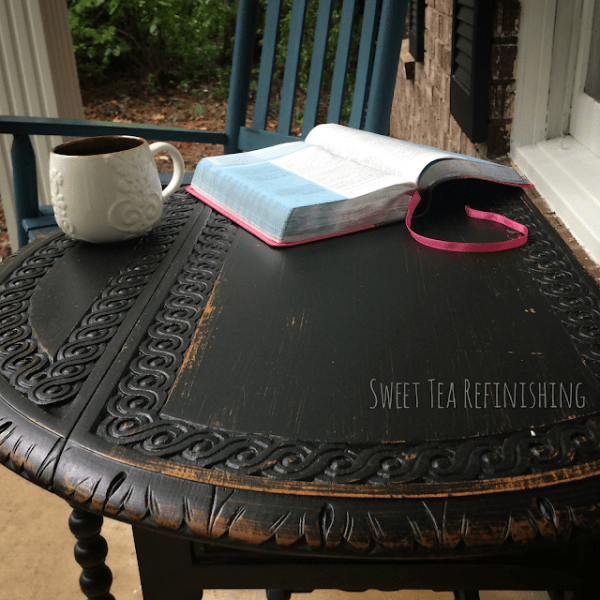

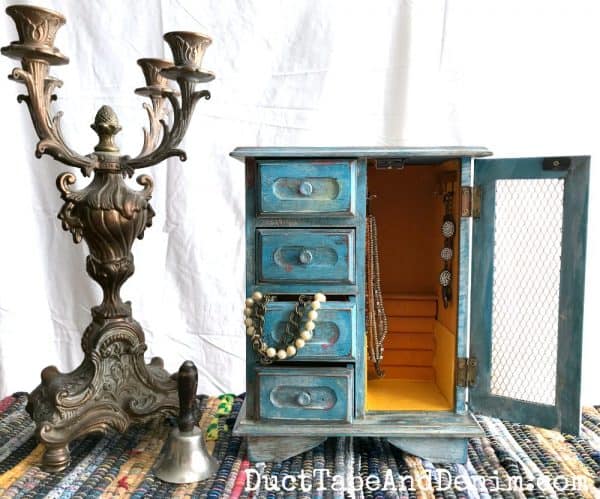
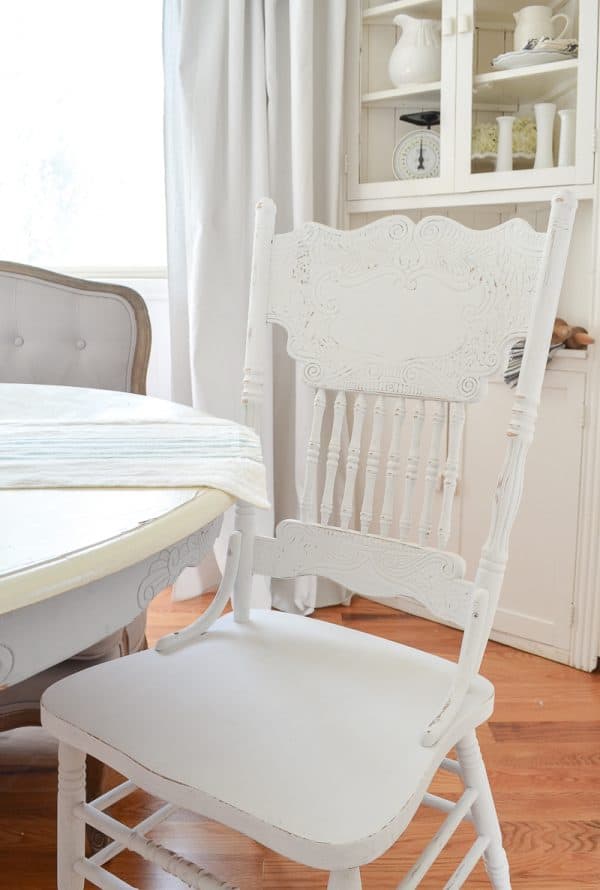
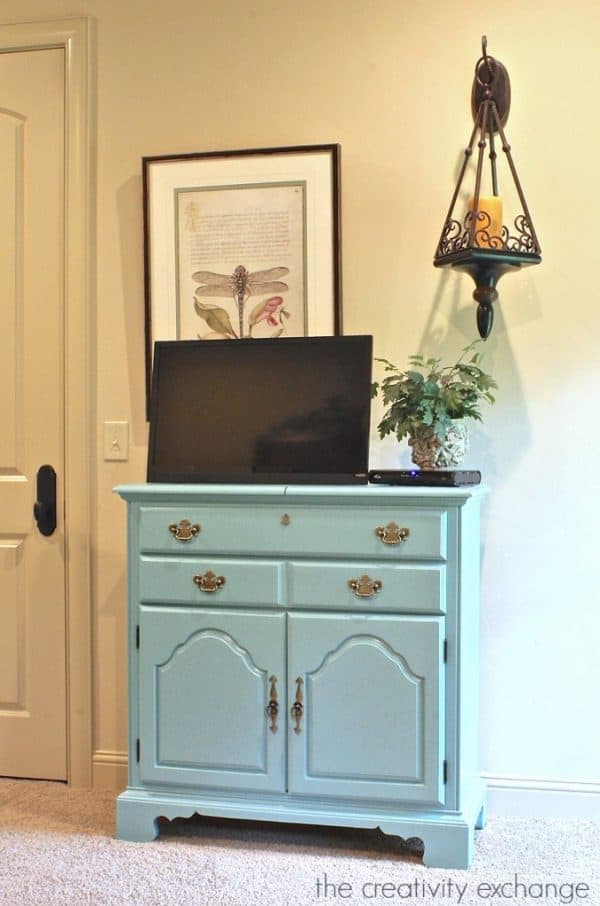

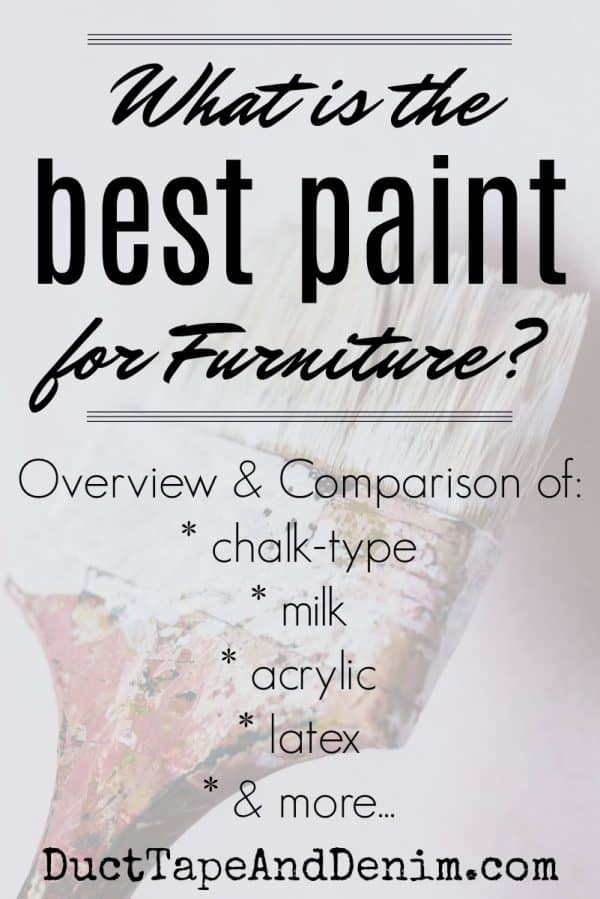

angie says
thank you for sharing this is a great tutorial as I have inherited some older pieces that I want to redo
come see us at http://shopannies.blogspot.com
ducttapeanddenim says
It’s something you add to the paint so that it takes longer to dry. Then you can wipe it off and it just stays in the details.
Virginia says
My favorite paint for furniture is Dixie Belle!!!
Mary says
Great post Ann, shared it in my group!
At Rivercrest Cottage says
I love Amy Howard’s One-Step chalk paint for metal. It adheres without a problem and doesn’t drip. My daughter and I painted her large hanging chandelier without taking it down (which would’ve required two electrician visits as her ceilings are high and it is super heavy. By removing the globes, painting it black with One-Step, and replacing the bulbs with Edison bulbs, we updated it to look better than the Pottery Barn one she desired.
ducttapeanddenim says
I love that idea… and that’s great to know about Amy Howard’s paint. I haven’t tried it yet.
Becky says
Rethunk Junk by Laura Resin paint is an amazing furniture paint! I have found it so easy to work with an extremely durable.
Jill says
Can you review Good Bones Paint?? Thanks!
ducttapeanddenim says
I sent you an email!
Renee Zemanski says
Hi! General Finishes makes an awesome milk paint that you don’t have to mix. You can purchase it by the pint or quart and it doesn’t require a topcoat. It goes on beautifully and distresses well. It’s my go-to paint!
Dixie says
Still confused on what paint I should use on my dining room table and chairs. Just too many options I guess.
ducttapeanddenim says
Personally, I would still use chalk paint. For my dining table, I’m planning to chalk paint the bottom and stain the top.
Marjorie says
I painted a small old side table (from the 1930s?) years ago. It had probably had been originally painted with oil paint. I used latex paint, and a few years later the paint started to peel. Do you think the peeling was caused by putting latex paint on top of oil paint? Could you comment on any tricks you use when covering one type of painted surface with a different type of paint. What should we avoid doing?
ducttapeanddenim says
That’s probably why it peeled. I’ve painted latex over oil before but we sanded it really well so it would stick better. I can’t remember if we used a primer too, but that would help also. And clean it really well before painting. Hope this helps.